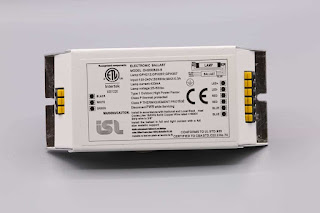Why Are Brushless DC Motors So Often Chosen As The Optimal Motor Solution?
When product designers and engineers design an application that requires a motor, they often turn to the brushless DC motor - Why is that?
A brushless, or BLDC motor, converts electrical energy into mechanical energy via electromagnets in a stator which spins permanent magnets on a rotor. It’s this mechanism which allows high-efficiency brushless motors to offer a high degree of control.
Brushless motors are rapidly replacing brushed DC motors in applications such as robotics, healthcare, electric cars, and many more. They can be found in unmanned aircraft such as drones. Brushless DC motors don't have any brushes, therefore they operate without many of the restrictions that brushed DC motors are saddled with.
- https://fdlclassifieds.com/0/posts/9-Jobs/101-Manufacturing/2037553-Premium-Planetary-Gear-Motors-ISL-Products-International.html
- https://postquickads.com/0/posts/9-Jobs/101-Manufacturing/1799354-Premium-Planetary-Gear-Motors-ISL-Products-International.html
- https://trybotics.com/ad/6726
- https://postherefree.com/482/posts/3/135/1837223.html
- https://uycart.com/0/posts/9-Jobs/101-Manufacturing/1803562-Dependable-UV-Light-Ballasts-ISL-Products-International.html
- https://www.comadz.com/0/posts/9-Jobs/101-Manufacturing/2073914-Dependable-UV-Light-Ballasts-ISL-Products-International.html
- https://www.bpublic.com/classifieds/dependable-uv-light-ballasts-isl-products-international
- https://freewebads.us/482/posts/3/135/1828301.html
- http://pixolinks.com/0/posts/9-Jobs/101-Manufacturing/1785413-Reliable-DC-Servo-Motors-ISL-Products-International.html
- https://instantadz.com/0/posts/9-Jobs/101-Manufacturing/1793505-Reliable-DC-Servo-Motors-ISL-Products-International.html
- https://fwebdirectory.com/0/posts/9-Jobs/101-Manufacturing/2452729-Reliable-DC-Servo-Motors-ISL-Products-International.html
- https://eonlineads.com/482/posts/5/50/1948711.html
The operation and mechanics of BLDC motors
BLDC motors do not require rotor coils, instead, the coils are located on the stator, which is coupled to the motor body. Permanent magnets are then linked to the rotor. Brushes are therefore not required because the coils are no longer rotating. BLDC commutation is electrical as opposed to mechanical, switching the magnetic poles of the stator windings that then causes the motor to rotate.
The permanent magnets on the rotor of a brushless DC motor are rotated by switching the magnetic field direction produced by the motor windings. By altering the amount and direction of current flowing into the coils, very precise rotational control may be achieved.
Why are brushless dc motors the best solution?
A brushless DC motor doesn't have very many components, which means it doesn’t wear out as quickly. A brushed DC motor, on the other hand, will ultimately fail as its internal brushes inevitably wear out over time.
Due to the absence of brushes there is reduced heat and noise production as well as no dust or sparks, which increases the life of the application that it has been installed in. Sparking occurs in a brushed motor when the brushes move across the commutator, and it is this action that also produces electrical noise. BLDC motors are therefore highly suited to applications which demand very low electrical noise emission.
1. Low noise emission
2. Long serviceable lifespan
3. Reduced maintenance
4. Compact, yet powerful operation
5. Reduced operational downtime
6. Lower costs associated with maintenance
7. High rotational speeds and efficiency
In some of the most popular applications, brushless motors are now replacing brushed motorsas they become more widely available and capable of performing the same function, at a similar price point.
With a focus on value-added solutions, ISL Products has been designing and producing brushed and brushless dc motors for over four decades now. If you require expert help or advice regarding your electronic component needs, get in touch with ISL Products’ expert team today.
If you demand the best, demand ISL Products.


.jpg)


Comments
Post a Comment